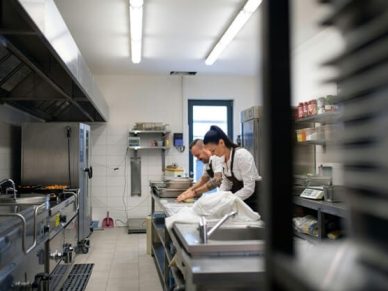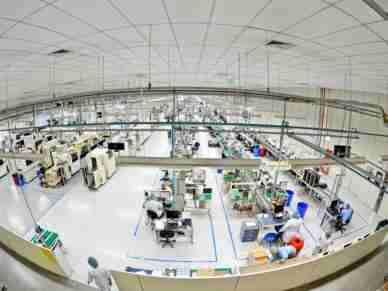Lab-grown meat could prevent animal cruelty and enhance sustainability, but will it catch on?

A Gallup poll in the summer of 2018 showed that despite an 8.1 percent increase in the sales of plant-based food the previous year, the percentage of vegetarians and vegans in the United States has remained unchanged since 2012 — at 5 percent and 3 percent, respectively. The survey concluded, stating “… it appears Americans are eager to include alternatives to animal products in their diets but are not willing to give up animal products completely.”
As more and more people become aware of the environmental problems posed by livestock production — as well as the health risks, and cruelty to animals involved in our dependence on meat — the need for a viable alternative becomes more enticing. Hence, the pursuit of affordable, tasty cultured meat.
What Is Cultured Meat?
Cultured meat, also known as clean meat, is simply lab-grown meat that is made using common cell culture techniques. To make the meat, a tissue sample is first collected from an animal. Next, lab technicians collect stem cells from the sample and multiply them. The stem cells differentiate and form fibers which eventually form muscle tissue. In many cases, fat cells are added to make the meat juicier and more flavorful, as are other natural additives (beet juice, salt, bread crumbs, etc.) for texture and color.
In 2013, Dutch food tech company Mosa Meat was the first to make a “slaughter-free hamburger” using cow cells. Presented at a London press conference, and the result of years of R&D funded by Google co-founder Sergey Brin, the burger cost nearly $300,000. Buoyed by the presentation’s success, Mosa Meat has since been focusing on scaling up production of the burgers and finding ways to cut costs, with the goal of having affordable patties on the shelves in the next few years.
Advantages
In addition to cost dropping as the methodology is improved, the amount of time it takes to procure clean meat has also decreased significantly. Lab-grown meat takes a couple of months to cultivate before it can be harvested, whereas a chicken, pig, or cow can take several months or years before they are used for meat.
Mosa Meat claims that one tissue sample can produce enough meat for 80,000 quarter-pound patties. According to the Food and Agriculture Organization of the United Nations, 26 percent of Earth’s ice-free land and 33 percent of its croplands are used for livestock. With a growing population, that number is expected to rise. Additionally, a study by GRAIN and the Institute for Agriculture and Trade Policy (IATP) found that if meat production continues to grow at its current rate, the industry will surpass oil as the biggest emitter of greenhouse gases. The ability to harvest vast amounts of meat from a single tissue sample can drastically reduce the amount of livestock needed, freeing up land and saving the environment by reducing greenhouse emissions.
In addition to the environmental benefits that could have a positive impact on human health, the meat itself boasts potential health benefits. Lab-grown meat would reduce the use of antibiotics and pesticides and other toxins that have found the way into our meat. The sterile, controlled conditions used to culture the meat would also greatly reduce the risk of food being contaminated with E. Coli, Salmonella, or other animal-borne diseases.
Cultured Meat not only contributes to food safety by keeping the meat pathogen-free, it can be tailored to be healthier. Scientists can engineer the meat to add more vitamins and minerals to the meat or reduce the amount of saturated fat that contributes to heart disease. Such nourishment could find its way to the populations of developing countries as the production of clean meat makes significant drops in cost, to the point that it is less expensive than traditional meat.
Some cultured meat could even help creatures who are threatened because their meat is so desirable. The bluefin tuna is suffering such a fate, but Finless Foods, which focuses on cultured seafood, hopes to protect the ocean-dweller while still satisfying the appetite of the world’s pescatarians. The company has dedicated its research to the bluefin and hopes to bring a lab-grown product to market by the end of 2019.

A Stumbling Block
One major problem with both the cost of producing cultured meat and the desire for making the meat cruelty-free is in the media used in growing the cells. Just like cells in living creatures, the cells being procured as cultured meat need nutrients and proteins. Sugars and minerals can be added to the media to provide nutrients, but the protein comes from a separate serum.
Currently, some of these serums are made of fetal cow blood that is drawn from the heart of a cow fetus as it dies after being removed from its slaughtered mother. Other blood used in serums has been drawn from adult and newborn animals, but the problem remains: Not only is the process certainly not cruelty-free, it’s very expensive. Efforts to use plant-based proteins in the serum are underway, but such a development does not appear to be imminent.
Regulation and Labeling Issues
Another issue concerning cultured meat is regulation. In a public meeting in July 2018, the FDA stated its intent to have jurisdiction over cultured meat, citing its Center for Food Safety, which has been working with biotech food products for decades. The USDA took issue and wanted involvement as well, explaining that if the meat is commercialized, it needs to be inspected by the USDA.
As a result, a meeting hosted by the FDA and USDA took place in October 2018. Regulations and labeling were discussed with representatives of the National Farmers Union and the U.S. Cattlemen’s Association (USCA), among others objecting to using the terms, “meat,” “beef,” “seafood,” or “poultry” for any food derived from tissue grown in a lab rather than raised in the traditional manner.
On the other hand, Alex Berezow, a Senior Fellow at the American Council on Science and Health, objected to the labeling of cultured meat, explaining, “There is no scientific difference between foods produced using biotechnology and those produced by other means. He furthered his point by pointing out “hidden meanings” in some labels that could mislead consumers: “Absence claims, such as ‘GMO free’ imply that there is something wrong with GMOs, and consumers interpret them to mean that.”
Ultimately, the two-day meeting produced no decisions, but JUST, which offers plant-based, chicken-free egg substitutes, was in a similarly tricky situation concerning labeling that could provide some precedent. Peter Licari, JUST CTO, was also at the USDA-FDA meeting and explained his company’s fight with the FDA over labeling its products. The company agreed to use a “statement of identity” on the packaging for its products JUST Egg and JUST Mayo, describing them as a “plant-based scramble” and “spread and dressing,” respectively.
A Cultured Future
Of course, the biggest test for cultured meat will be in consumer opinion. Will the products have the flavor and textures a meat-eating public has come to expect and crave? Perhaps more importantly, will consumers accept the idea of eating meat that comes from a petri dish rather than an animal on a farm?
While some companies hope to have their cultured meat products on the shelves in the next year, others believe it will take a bit longer. However, the general consensus is that lab-grown meat will be an option for the dinner table within the next decade or so. At that time, we will know the final verdict from the public and whether cultured meat will be a major contributor to a more sustainable future.















